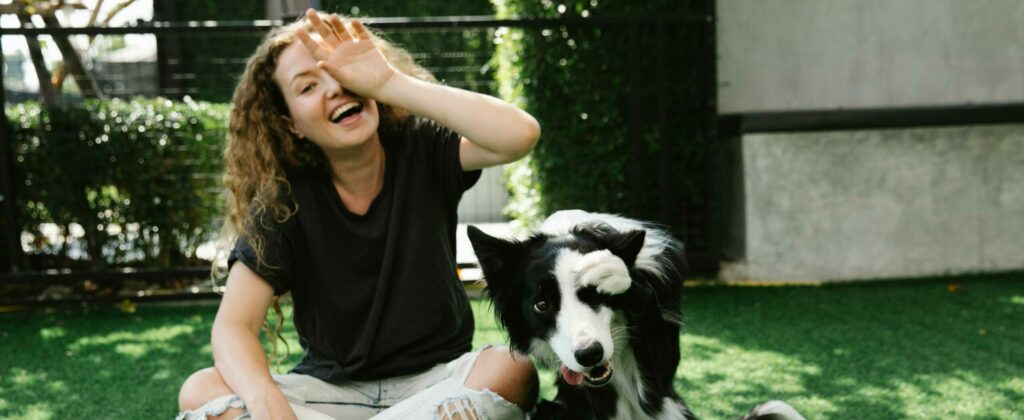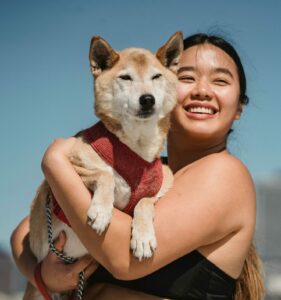 Have you ever noticed how some dogs and their owners seem to share a striking resemblance? It’s not just a coincidence or a topic for amusing social media posts; there’s actual science behind why some pets and their owners look eerily alike. This phenomenon, which has intrigued both psychologists and animal behaviorists, sheds light on the deep psychological underpinnings that influence how people choose their pets.
Have you ever noticed how some dogs and their owners seem to share a striking resemblance? It’s not just a coincidence or a topic for amusing social media posts; there’s actual science behind why some pets and their owners look eerily alike. This phenomenon, which has intrigued both psychologists and animal behaviorists, sheds light on the deep psychological underpinnings that influence how people choose their pets.
The idea that dogs often resemble their owners has been supported by various studies. One notable study by Michael Roy and Nicholas Christenfeld of the University of California, San Diego, found that people could match photos of dogs with their owners at a significantly higher rate than would be expected by random chance. This suggests that the physical similarity between dogs and their owners is detectable to the casual observer.
So, why do people tend to choose dogs that look like them? There are a few psychological theories that might explain this phenomenon:
- Familiarity Attraction: Humans are generally attracted to the familiar. Psychologists suggest that people are naturally drawn to animals that have a resemblance to themselves as it feels more familiar and comforting. This could be due to facial features, expressions, or even body size and shape.
- The “Mini-Me” Phenomenon: Choosing a pet that resembles oneself might also be driven by a subconscious desire for miniaturization or replication of oneself—an extension of one’s identity. This is seen in how people might choose breeds that not only look like them but also display similar personality traits.
- Perceived Compatibility: When adopting a pet, owners might subconsciously believe that an animal that looks like them will have compatible behaviour or temperament. This perception of similarity can facilitate an immediate connection, which is often a crucial factor in the selection of a pet.
Genetic Resemblance: Fact or Fiction?
While dogs and their owners may sometimes look alike, there is no genetic overlap between a human and their pet. The resemblance is purely coincidental or a result of selective preference by the owner. However, the mirroring of expressions can often enhance the perceived similarity. Dogs are highly sensitive to human behaviour and can often mimic facial expressions and emotions, which can make them appear more similar to their owners over time.
The Role of Breed Characteristics
Breed characteristics also play a significant role in this phenomenon. Certain breeds have more distinctly “human” facial features, such as large eyes and expressive eyebrows, which can make the resemblance to their human counterparts more pronounced. Furthermore, people might choose a breed based on their own lifestyle and personality traits—active individuals might choose sporty breeds, while more reserved people might prefer a calm and collected breed, inadvertently selecting dogs that resemble their physical and behavioural traits.
Implications of Look-Alike Choices
Understanding why owners choose dogs that look like them can have broader implications, especially for dog trainers and behaviorists. Recognizing that owners may have an affinity for dogs that mirror their own behaviours and looks can aid in personalized training and care strategies, making it easier to address specific behavioural issues or training needs.
 The phenomenon of dogs and their human doppelgängers is more than just a curiosity—it’s a reflection of the deep psychological processes that govern human preferences and social bonding. Whether driven by a search for familiarity, identity extension, or perceived behavioural compatibility, the choice of a pet that resembles its owner highlights the complex and profound bonds that form between humans and their canine companions. This intriguing aspect of human-animal relationships continues to fascinate and inspire deeper exploration into our connections with our pups!
The phenomenon of dogs and their human doppelgängers is more than just a curiosity—it’s a reflection of the deep psychological processes that govern human preferences and social bonding. Whether driven by a search for familiarity, identity extension, or perceived behavioural compatibility, the choice of a pet that resembles its owner highlights the complex and profound bonds that form between humans and their canine companions. This intriguing aspect of human-animal relationships continues to fascinate and inspire deeper exploration into our connections with our pups!